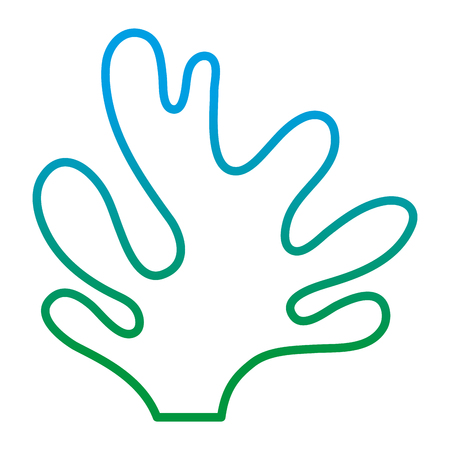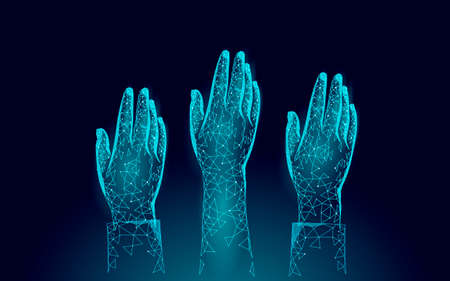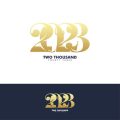1. Understanding Children Lines in Palmistry
If you’re new to palmistry, the idea of “children lines” might sound a bit mysterious at first. In the world of palm reading, children lines are slender markings that some believe can give insights into family life and parenthood. This introduction will break down what these lines are, where you can find them on your palm, and what traditional interpretations say about their meaning—all with an American perspective that fits our unique culture and views on family.
What Are Children Lines?
Children lines are thin vertical marks that appear just above the marriage or relationship lines, which are located on the edge of your palm below the pinky finger (the little finger). In classic palmistry, these delicate lines are said to represent children you may have or your general connection to kids—biological, adopted, or even symbolic relationships like mentorship.
Where to Find Children Lines
The children lines are found on the Mount of Mercury, which is the outermost part of your palm right under your pinky. These lines run perpendicular (up and down) to the horizontal marriage/relationship lines. Here’s a simple table to help visualize where these features are:
| Palm Area | Associated Feature |
|---|---|
| Mount of Mercury (below pinky) | Marriage/Relationship Lines (horizontal) |
| Just above marriage lines | Children Lines (vertical, fine marks) |
Traditional Interpretations in Palmistry
In traditional palmistry—practiced for centuries across various cultures—children lines were thought to indicate not only the potential number of children a person might have but also qualities like their gender or the nature of your bond with them. American practitioners often take a more flexible view: rather than predicting literal offspring, these lines can also reflect your role as a caregiver, mentor, or someone influential in young people’s lives.
A Modern Take for American Families
It’s important to remember that in today’s America, families come in all shapes and sizes. Whether you’re a parent, an adoptive parent, a step-parent, or someone who plays an important role in kids’ lives through teaching or community involvement, children lines in palmistry can be seen as symbols of those connections—not just biology.
This makes palmistry accessible and meaningful to everyone interested in exploring their relationships and roles within their family and community.
2. The American Context: Beliefs and Skepticism
Understanding Palmistry in the United States
Palmistry, also known as chiromancy, has a long history worldwide, but its role in American culture is unique. In the United States, palm reading often sits at the crossroads of entertainment, spirituality, and skepticism. While some people are curious about what their palms might reveal—especially regarding children and family—others approach it with a healthy dose of doubt.
Family Planning and Children Lines: An American Viewpoint
The idea that lines on your palm can predict how many children you will have or your experiences as a parent fascinates many Americans. However, most people do not take these predictions literally. Instead, they may see palmistry as a fun activity at parties or fairs, or as a conversation starter rather than a scientific truth.
Common Attitudes Toward Children Lines in Palmistry
| Attitude | Description |
|---|---|
| Curiosity | Many enjoy hearing what a palmist says about their future family out of interest or amusement. |
| Skepticism | A large portion sees palmistry as folklore and not something to base real-life decisions on. |
| Spiritual Exploration | Some people use palm readings as part of their broader spiritual journey or self-reflection process. |
| Cultural Tradition | Certain communities may value palmistry as part of their heritage or cultural practices. |
The Role of Folklore and Spirituality in Family Decisions
In the U.S., beliefs around family planning are shaped by a mix of science, tradition, religion, and personal choice. While mainstream culture relies heavily on medical advice and modern family planning methods, some individuals still turn to spiritual tools like palmistry for guidance or reassurance. This blending of folklore and modern life reflects Americas diverse population and the freedom to explore different paths.
Skepticism and Scientific Thinking
It’s important to note that critical thinking is highly valued in American society. Many people view palmistry with skepticism because it lacks scientific evidence. For most Americans, decisions about having children are influenced more by practical considerations—such as finances, career goals, and personal values—than by what’s written in their palms.

3. Modern Parenthood: Values and Expectations
When interpreting children lines in palmistry from an American perspective, it’s important to consider how modern values and expectations around parenthood shape these readings. The way Americans view family has changed over the decades, influenced by cultural trends, social movements, and evolving definitions of what it means to be a parent.
American Family Structures Today
Unlike the traditional nuclear family model, today’s American families come in all shapes and sizes. You’ll find single-parent homes, blended families, same-sex parents, and chosen families made up of close friends. This diversity impacts how people interpret children lines during palm readings. Instead of seeing these lines as strictly biological children, many Americans now see them as representing all forms of caregiving or nurturing relationships.
| Family Structure | Interpretation of Children Lines |
|---|---|
| Nuclear Family (Two parents with biological children) | Lines may be seen as traditional offspring |
| Single-Parent Family | Each line might symbolize both biological and emotionally-close dependents |
| Blended/Stepfamily | Children lines could represent stepchildren or adopted children as well |
| LGBTQ+ Families | Lines often reflect children regardless of biological connection; focus on intention and nurturing role |
| Chosen Families/Friends as Family | May interpret lines as close bonds where someone plays a parental or mentoring role |
The Role of Parenting Values in Palmistry Readings
Americans place high value on individuality, self-expression, and personal choice. Many believe being a good parent is more about the quality of care than following a specific formula. So when palmists interpret children lines for American clients, they often discuss not just the number of children but also the emotional bonds and personal meaning behind each relationship. For example, one line might indicate a particularly strong bond with one child or a special role as a mentor.
Expectations vs. Reality in Modern Parenting
The expectations around parenting have shifted significantly. Today, there is more acceptance for those who choose not to have children at all, and a growing recognition that family can be built in many ways—through adoption, fostering, or deep friendships. As such, some Americans look to palmistry for validation of their unique path to parenthood rather than confirmation of traditional roles.
Summary Table: American Values Influencing Children Line Interpretations
| Cultural Value | Palmistry Interpretation Impact |
|---|---|
| Diversity in Family Structure | Children lines can represent any caregiving relationship, not just biological offspring |
| Emphasis on Emotional Bonds | Focus shifts from quantity of lines to depth of connection indicated by each line’s characteristics (length, clarity) |
| Personal Choice & Non-Traditional Roles | Palmist may discuss non-parental nurturing roles (mentor, guardian) reflected in the hand’s markings |
| Inclusivity & Acceptance | Palmistry sessions often affirm all types of families and paths to parenthood equally valid and meaningful |
4. Palmistry Readings: Beyond Biological Children
In American culture, families come in all shapes and sizes. When it comes to palmistry, the traditional “children lines”—the small vertical lines under the pinky finger—are often thought to represent the number of biological children a person may have. However, for many Americans, these lines can mean much more than just biological offspring.
The Many Meanings of Children Lines
Today, families are not always defined by blood. Palmists in the United States increasingly interpret children lines as symbols of different types of family connections and nurturing roles. Here are some broader meanings that reflect diverse American households:
| Children Lines May Represent… | Description |
|---|---|
| Biological Children | Traditional interpretation; children born to you by birth. |
| Adopted Children | Kids brought into your family through adoption, reflecting love beyond biology. |
| Stepchildren | Children who become part of your life through marriage or partnership. |
| Spiritual Children | People you mentor or guide as if they were your own kids, such as students or younger relatives. |
| Found Family | Friends and community members who take on family-like roles in your life. |
Mentorship and Guidance in Palmistry Readings
Many Americans find deep fulfillment in mentoring others or taking on nurturing roles outside of parenthood. If you see several children lines in a palm reading, it might suggest a strong desire to care for, teach, or inspire others—even if you do not have biological kids. Teachers, coaches, youth leaders, and even supportive neighbors may see these lines as a reflection of their positive impact on young lives around them.
Reflecting American Diversity in Family Structures
Palmistry readings in the U.S. increasingly acknowledge LGBTQ+ families, blended households, single parents, and those who create chosen families. This openness mirrors modern American values, where love and care matter more than genetics alone. In your palm reading session, dont be surprised if a palmist asks about important non-biological relationships too!
5. Ethics and Responsibility in Palmistry
Palmistry, especially when discussing childrens lines, comes with a unique set of ethical responsibilities. In the American context, where family structures and views on parenthood are diverse, palmists must approach readings with sensitivity and care. This means recognizing that not everyone has or wants children, and that cultural backgrounds and personal experiences play a big role in how people view family life.
Sensitivity to Personal Situations
When reading children lines, it’s important for palmists to avoid making assumptions about a persons desire or ability to have children. Many Americans come from blended families, have chosen childfree lives, or may be experiencing fertility challenges. An ethical palmist always respects these circumstances by:
| Consideration | Recommended Approach |
|---|---|
| Avoiding Assumptions | Ask open-ended questions rather than making statements about someones future children. |
| Respecting Privacy | Allow the client to share what they’re comfortable with instead of pressing for personal details. |
| Offering Support | Be empathetic if sensitive topics arise and offer encouragement rather than certainty. |
Inclusivity in Modern American Families
The definition of family in America is broad, including adoptive parents, same-sex couples, single parents, and more. Palmists should keep this inclusivity in mind. Instead of focusing solely on biological children, they can interpret children lines as symbols of nurturing relationships—these could mean stepchildren, adopted children, mentees, or even beloved pets for some clients.
Tips for Inclusive Readings
- Use language like “potential for nurturing” instead of “you will have X number of children.”
- Acknowledge all types of families as valid and meaningful.
- Encourage clients to interpret their lines in ways that reflect their own lives.
Avoiding Harmful Predictions and Stereotypes
Ethical palmists steer clear of making predictions that could cause distress or reinforce stereotypes. For example, telling someone they “will never have children” can be deeply upsetting and inaccurate. Similarly, avoiding gender roles—for instance, assuming only women care about children lines—is key to respectful practice in the U.S.
Common Pitfalls to Avoid
| Pitfall | Why It’s Harmful | Better Practice |
|---|---|---|
| Saying someone will or won’t have kids based on a line | This can be distressing or misleading; lines are not guarantees. | Frame interpretations as possibilities, not certainties. |
| Tying worth or happiness to parenthood status | Reinforces outdated stereotypes about fulfillment and success. | Celebrate all life paths equally. |
| Assuming everyone wants biological children | Inequitable to those who adopt, foster, or remain childfree. | Acknowledge many forms of family and nurturing roles. |
By practicing sensitivity, inclusivity, and care with every reading, palmists in America can ensure their work supports clients’ well-being without causing unnecessary worry or reinforcing outdated ideas about family and parenthood.


